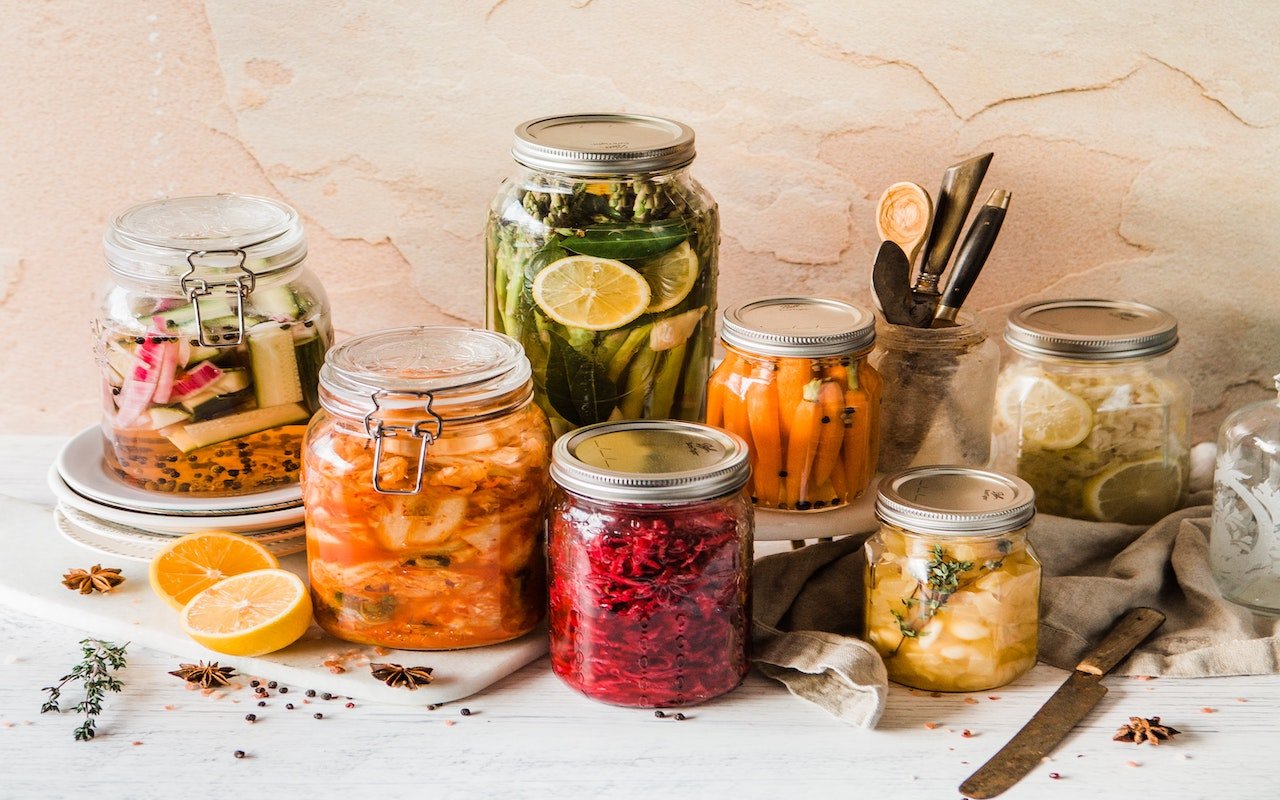Embark on a journey of culinary alchemy with our DIY fermentation projects. Explore the science behind creating probiotic-rich foods, from kimchi to kombucha, and transform ordinary ingredients into extraordinary flavors.
Embark on a Journey of Culinary Alchemy with DIY Fermentation Projects
There is something magical about the process of fermentation. It is a transformative journey that takes ordinary ingredients and turns them into extraordinary flavors. From tangy sauerkraut to fizzy kombucha, fermentation not only enhances the taste of food but also provides numerous health benefits. With our guide to DIY fermentation projects, you can unlock the secrets of this ancient culinary art and embark on a journey of culinary alchemy.
If you’re interested in trying your hand at fermentation, there are many easy and beginner-friendly projects you can start with. Here are a few ideas:
- Sauerkraut: This classic fermented cabbage dish is a great way to get started. All you need is cabbage, salt, and water.
- Kimchi: This traditional Korean dish is a staple in Korean cuisine and is known for its bold flavors and probiotic benefits. Made from fermented vegetables, such as cabbage and radishes, kimchi is a versatile condiment that can be enjoyed on its own or used to add a punch of flavor to soups, stir-fries, and rice dishes. With just a few simple ingredients and some patience, you can create your own batch of homemade kimchi.
- Sourdough Bread: There is nothing quite like the aroma and taste of freshly baked sourdough bread. The secret to its distinct flavor and texture lies in the fermentation of the dough using a sourdough starter. By combining flour and water and allowing natural yeasts and bacteria to develop, you can create your own sourdough starter and use it to make artisanal bread that is crusty on the outside and soft on the inside.
- Kefir: This fermented milk drink is a great source of probiotics. Kefir can be made with cow’s milk, goat’s milk, or plant-based milks.
- Kombucha: Kombucha is a fermented tea that has gained popularity for its refreshing taste and potential health benefits. It is made by fermenting sweetened tea with a SCOBY (symbiotic culture of bacteria and yeast), which transforms the sugar and caffeine into beneficial acids and enzymes. With a little time and attention, you can brew your own kombucha at home and experiment with different flavors and ingredients.
- Yogurt: Homemade yogurt is not only delicious but also packed with probiotics that promote gut health. All you need is some milk and a starter culture or a small amount of store-bought yogurt to kickstart the fermentation process. With a yogurt maker or a simple jar and some patience, you can enjoy creamy, tangy yogurt that can be customized with your favorite toppings and mix-ins.
- Fermented Pickles: Forget store-bought pickles that are loaded with preservatives. Homemade fermented pickles are crisp, tangy, and full of probiotics. By submerging cucumbers in a brine of saltwater and allowing them to ferment for a few days or weeks, you can create pickles that are bursting with flavor and beneficial bacteria.
- Miso: Miso is a traditional Japanese seasoning made from fermented soybeans, rice, or barley. It is rich in umami flavor and can be used in soups, marinades, dressings, and more. With a few simple ingredients and some patience, you can create your own miso paste at home and enjoy its unique flavors in your cooking.
- Fermented Hot Sauce: If you like a little heat in your food, why not try making your own fermented hot sauce? By fermenting chili peppers with salt and other flavorings, you can create a spicy condiment that adds a kick to any dish. The fermentation process not only enhances the flavor but also increases the heat level of the peppers.
- Fermented vegetables: You can ferment a variety of vegetables, including cucumbers, carrots, peppers, and onions.
Once you’ve chosen a project, you can find detailed instructions online or in cookbooks. The basic steps for fermentation are:
- Prepare the ingredients.
- Add salt or another fermenting agent.
- Pack the ingredients into a clean jar.
- Weight the ingredients down to keep them submerged.
- Seal the jar and let it ferment in a cool, dark place.
The fermentation process will take several days to weeks, depending on the type of food you’re fermenting. Once the fermentation is complete, you can store your fermented foods in the refrigerator for up to several months.
Fermentation is a fun and easy way to add delicious and nutritious foods to your diet. With a little bit of experimentation, you can create your own unique fermented dishes that will tantalize your taste buds and boost your gut health.
Additional Tips
Here are some additional tips for successful fermentation:
- Use clean, sanitized equipment.
- Use fresh, high-quality ingredients.
- Keep the fermentation vessel in a cool, dark place.
- Don’t overcrowd the fermentation vessel.
- Taste the food regularly to check for doneness.
If you’re new to fermentation, it’s a good idea to start with a simple project like sauerkraut or kimchi. Once you’ve mastered these basics, you can move on to more complex projects like kombucha or fermented vegetables.
With a little bit of practice, you’ll be an expert fermenter in no time!
Embarking on a journey of culinary alchemy with DIY fermentation projects allows you to explore the science behind creating probiotic-rich foods. From kimchi to kombucha, these projects not only provide delicious flavors but also promote gut health and overall well-being. So, gather your ingredients, embrace the transformative power of fermentation, and let your taste buds embark on a flavorful adventure.

